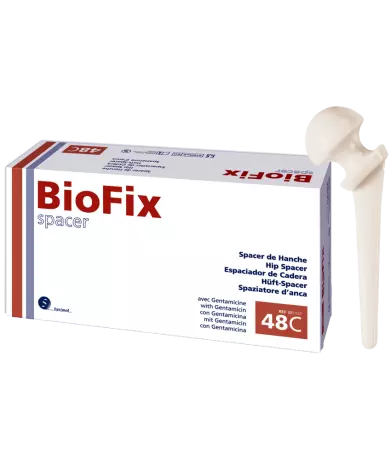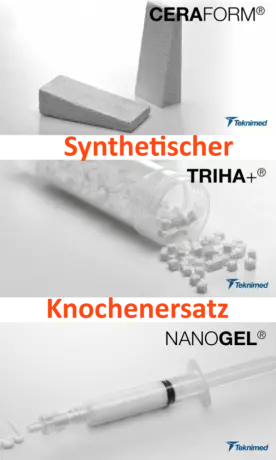
BioFix interim hip prosthesis with the antibiotic gentamicin. The BioFix hip spacer (interim pros...
Portal and digital medical technology fair of the largest MedTech cluster in Germany

BioFix interim hip prosthesis with the antibiotic gentamicin. The BioFix hip spacer (interim pros...

Synthetic bone substitute material
TRIHA+® TRIHA+® is a synthetic bone replacement material which is available as granules,...

Many researchers have studied bone substitute materials for use in orthopedic surgeries. The ideal material should be biodegradable, thermally nonconductive, and easily available. Aside from being biodegradable, the ideal bone substitute should also be inexpensive and readily available. These qualities are essential in a bone substitute. The following are some of the most popular materials used in orthopedic surgeries. Here are some examples of some of the more common types of bone substitute materials.
The ideal bone substitute material would be biomechanically stable and biocompatible. The material should also contain inductive factors that promote bone regeneration, and would be easily absorbed by the body. It would be easy to use, cheap, and readily available. The goal is to create a better, longer lasting bone replacement for a patient. But how can we achieve this goal? Here's a look at the science behind the ideal bone substitute material.
Bone substitute materials should exhibit characteristics that mimic the characteristics of real bone. Ideally, they should be osteoconductive and bioinductive. During the healing process, the bone replacement material should be biocompatible and nontoxic. The best bone replacement material should also be free of immunological or metabolic rejection. And it should be easily available, affordable, and easy to use. This article will look at some of the most promising bone substitute materials in clinical practice.
The study was limited in its scope. The authors of the study noted that the CBVF materials were moldable and could be injected to voids. The authors discussed the potential of the new material for long-term bone grafting. But further research is needed. Ultimately, this type of material may improve the outcome of reconstructive surgeries. And the authors of the paper hope to develop a new class of chemobrionic bone substitute materials.
Regulatory bodies must be required to regulate the development of bone graft substitutes and prevent harm to patients. The clinical data of the new bone grafts should be reviewed by a notified body. This research suggests that the existing regulatory system is not sufficient for ensuring safety. As a result, manufacturers of these materials should submit clinical studies. And, they should also be required to disclose clinical trial outcomes. The process should be transparent and objective.
The materials that are available for bone reconstruction are bioactive ceramics. This type of material is bioabsorbable and has osteoconductivity. In addition to its biocompatibility, HA is a highly effective bone replacement material. Various manufacturers have their own HA products. These manufacturers may provide surgeons with a selection of these materials. For patients, these products may prove to be useful in both orthopedic procedures.
Become a digital exhibitor yourself in the online portal of the largest and best-known MedTech cluster region in Germany and inform the world of medical technology about your products and services as well as about news, events and career opportunities.
With an attractive online profile, we will help you to present yourself professionally on our portal as well as on Google and on social media.